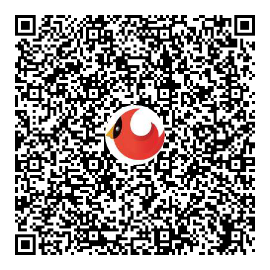深入研究 UILabel 意味着要探讨其多样的用法以及如何在具体的应用场景中最大化其效用。下面我将提供一些 UILabel 的基础和进阶用法示例,帮助你更好地理解和使用这个组件。
基础设置
let label = UILabel()
label.frame = CGRect(x: 50, y: 100, width: 200, height: 20)
label.text = "Hello, World!"
label.textColor = .black
label.textAlignment = .center
label.font = UIFont.systemFont(ofSize: 16)
view.addSubview(label)
在这个基础示例中,我们创建了一个 UILabel,设置了它的位置、大小、文本、文本颜色、文本对齐以及字体。
富文本使用
let richTextLabel = UILabel()
richTextLabel.frame = CGRect(x: 50, y: 150, width: 200, height: 60)
let attributedString = NSMutableAttributedString(string: "Rich Text Label")
attributedString.addAttribute(.font, value: UIFont.boldSystemFont(ofSize: 18), range: NSRange(location: 0, length: 4))
attributedString.addAttribute(.foregroundColor, value: UIColor.red, range: NSRange(location: 5, length: 4))
attributedString.addAttribute(.underlineStyle, value: NSUnderlineStyle.single.rawValue, range: NSRange(location: 10, length: 5))
richTextLabel.attributedText = attributedString
view.addSubview(richTextLabel)
这个示例展示了如何创建一段富文本,并将其应用到 UILabel 上。我们将 “Rich” 字样设置为粗体,”Text” 字样设置为红色,并给 “Label” 添加了下划线。
动态字体调整
let dynamicFontLabel = UILabel()
dynamicFontLabel.frame = CGRect(x: 50, y: 230, width: 200, height: 40)
dynamicFontLabel.text = "Dynamic Font Size"
dynamicFontLabel.font = UIFont.preferredFont(forTextStyle: .headline)
dynamicFontLabel.adjustsFontForContentSizeCategory = true
view.addSubview(dynamicFontLabel)
在这个例子中,UILabel 使用了动态字体,这意味着当用户改变系统的字体大小设置时,UILabel 上的文本也会相应地调整大小。
自动调整文本大小以适应宽度
let adjustedLabel = UILabel()
adjustedLabel.frame = CGRect(x: 50, y: 290, width: 100, height: 20)
adjustedLabel.text = "Adjusts Font Size to Fit Width"
adjustedLabel.font = UIFont.systemFont(ofSize: 16)
adjustedLabel.adjustsFontSizeToFitWidth = true
adjustedLabel.minimumScaleFactor = 0.5
view.addSubview(adjustedLabel)
这里的 UILabel 会根据宽度自动调整文本的大小,确保文本内容不会因为标签宽度不足而被截断。minimumScaleFactor 属性设置了文本缩放的最小比例。
多行文本和行间距
let multilineLabel = UILabel()
multilineLabel.frame = CGRect(x: 50, y: 330, width: 200, height: 100)
multilineLabel.numberOfLines = 0
let paragraphStyle = NSMutableParagraphStyle()
paragraphStyle.lineSpacing = 5
let multilineString = NSMutableAttributedString(string: "This is an example of a multiline label with increased line spacing.",
attributes: [.paragraphStyle: paragraphStyle])
multilineLabel.attributedText = multilineString
view.addSubview(multilineLabel)
在这个示例中,我们设置了 UILabel 来展示多行文本,并且通过 NSMutableParagraphStyle 增加了行间距。
UILabel的性能优化
在处理大量数据和高性能要求的场景时,你应该考虑以下优化点:
- 尽可能重用
UILabel。例如,在UITableView或UICollectionView中使用dequeueReusableCell方法来重用单元格,而单元格内的UILabel随之被重用。 - 当更新
UILabel的文本或属性时,如果处于性能敏感的上下文(如滑动时),考虑进行批量更新或延迟更新。 - 避免不必要的布局计算。例如,如果
UILabel的大小不会因为内容变化而改变,可以将其translatesAutoresizingMaskIntoConstraints属性设置为false并为其设置固定的宽度和高度约束。
深入研究 UILabel 的这些特性和技巧,可以帮助你创建更高效、响应更快、并且用户体验更好的 iOS 应用。
© 版权声明
特别提醒: 内容为用户自行发布,如有侵权,请联系我们管理员删除,邮箱:mail@xieniao.com ,在收到您的邮件后我们会在3个工作日内处理。
相关文章
暂无评论...

 赣公网安备36020002000448号
赣公网安备36020002000448号